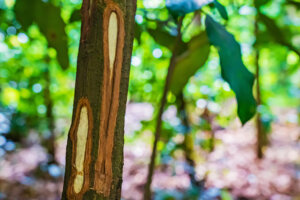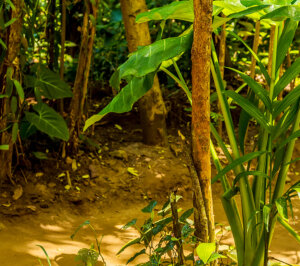The spice that people most associate with winter is sweet, fragrant, warm-with-memories cinnamon.
This universally beloved spice is labor-intensively harvested from the inner bark of the more than one hundred varieties of cinnamon trees that thrive on the South Asia subcontinent.
Renowned since antiquity, but kept secret by spice traders protecting their sources, cinnamon made its relatively late debut on the European stage in the sixteenth century and quickly became prized as a gift worthy of kings.
Cinnamon is readily available in stick, chip, and powder form. There are at least four different species sold as cinnamon, which has led to a spirited debate among importers, cooks, and even world governments. Sri Lanka currently produces fully ninety percent of the world’s cinnamon supply. In August of 2011, this tiny country launched an aggressive campaign to have its product declared the “true” cinnamon.

You see, another spice—cassia—has been on the spice scene as long as cinnamon, costs less than its competitor, and is fairly indistinguishable from it in appearance, aroma, texture, and taste. These two used to be explicitly labeled “cinnamon” and “cassia” on the spice-aisle shelf.
But in 1937, the U.S. Food and Drug Administration was successfully lobbied to lump cassia and cinnamon under the generic label “cinnamon.” Today, you may find Saigon, Indian, or Mexican cinnamon on that shelf, it’s an unspecified blend of cinnamon and cassia.

Interestingly enough, Mexico is the world’s largest importer of Ceylon—Sri Lankan—cinnamon, or as Sri Lankans say, “true” cinnamon, because the spice has become a crucial ingredient in Southwest cuisine.
Virtually all Mexican cookbooks painstakingly explain the difference between true cinnamon and cassia.
But beware that Ceylon Cinnamon is much more subtle, which may account for the growing popularity of Vietnamese Cinnamon, also known as Saigon Cinnamon among many serious cooks.
For most people, the discussion remains a distinction without a difference. Ground cinnamon, generic or “true,” adds a delightful kick to many sweet and savory dishes, including curries and stews, pastries and baked goods, breads and toast, soups and pastas, ice cream and chili, and even vegetables.
Mexico’s famed mole sauce, a classic topping for hot chocolate, contains Ceylon cinnamon.
And cinnamon sticks mulled in traditional apple cider, or in your favorite plant-based milk with honey are wonderfully warming winter beverages.
Store this pantry essential in tightly sealed glass containers. Ground cinnamon will stay fresh for about six months in your pantry, and stick cinnamon, for a year.
Look for Vietnamese Cinnamon and other cinnamon varieties at local natural food stores, ethnic markets, or spice vendors. You can purchase organic spices in bulk at Green Acres.
